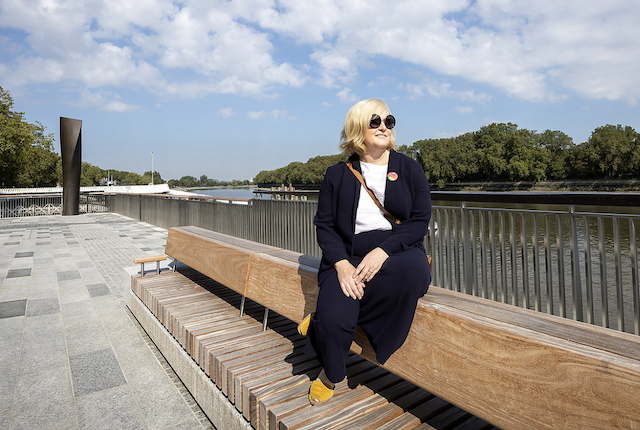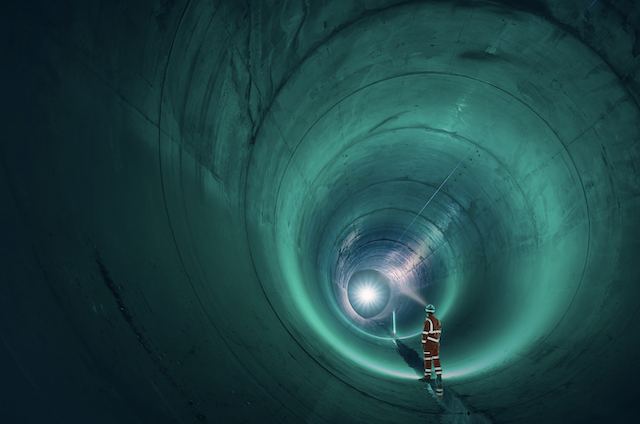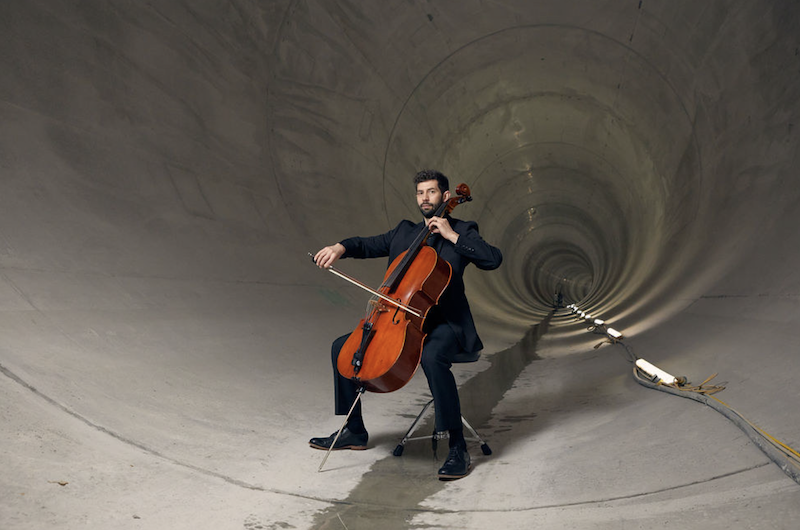Post
London’s super sewer: A cleaner river with new public open spaces
10 Sep 2024
COME TO OUR EVENT ON THE SUPER SEWER
Did you know, even a light drizzle of rain causes untreated sewage to spill into the River Thames from London's Victorian sewer network?
This adds up to tens of millions of tonnes every year. London's Victorian sewers were designed to serve 4 million people. Now nearly 9 million people send a stinking amount of poo through London's sewers daily.
Clare Donnelly, Tideway’s lead architect and director at Fereday Pollard, spoke to the London Society about the super sewer.
You've worked on many large-scale transport and infrastructure projects. What is different about the Thames Tideway Tunnel project?
There's so many things that are different, and so many things that are the same. I think the really fascinating part of Tideway is how interconnected it is, not only with the Bazalgette sewer system, but also with the deep history of London. The sewer system was built around the lost rivers. And those lost rivers facilitated the growth of London. Tideway is fundamentally an environmental project. It's about cleaning up the river. So it has a slightly different focus, and it feels very 21st century in that respect. It’s about trying to put right some of the environmental impacts we're having on London as a landscape.
Do people care about the River Thames?
I’m realising how much people love the Thames. People do absolutely adore being by the Thames and being part of London's largest open space. There have been studies on the benefits of this really important space. So it was lovely to be able to design sites that will help improve that.
Did you learn much about the history of London while working on the super sewer project?
It was part of my job, so you need to understand the cultural and the historic significance of where you are and it is also part of the job of an architect to understand that. You don't actually understand how the system works, unless you look back through the history, because it has grown incrementally. So you have to learn about the history and the development of London, and why we have to do this now.
Subscribe to the London Society newsletter
It sounds like a very complex task. Do you have that kind of brain?
Yes, I do. It was all fascinating. I was working very closely with the engineering team, and we're all Bazalgette fans. You’d be reading the proceedings from 1860 and how he had developed his system. The historic drawings are just beautiful, absolutely stunning. Peter Ackroyd's book on London The Biography and Thames: Sacred River were my Bible for a long time. And also books on the Great Stink. (In the summer of 1858 the heat caused centuries of waste in the Thames to ferment, the curtains at the Houses of Parliament were covered in lime to prevent the stench. It didn’t succeed.)
How important was it to integrate the history of the Thames into the project?
We commissioned the heritage interpretation strategy. It was a requirement of our planning permission that we interpret heritage on all of our sites, and we do that through the architecture and landscape. Tideway commissioned the heritage interpretation strategy, which focused on narratives around liberty, the river and the freedoms that the river afforded. Then we asked artists to take those narratives and interpret those in artworks that are on each of the sites.
The project involved many disciplines. How did that work?
We’ve got a job to do with cleaning up the river, and there's a lot of infrastructure that's below ground, huge engineering structures and valves to make the whole system work. There’s also the above-ground elements, such as the ventilation columns. We need to work out how the interfaces, below and above ground meet, and try to make the design work. That’s the challenge which will translate into exceptional design.
Where do you fit into the project?
The key is having ownership of the design and the design process, but inviting people to be part of it. You hold the pen, usually as the architect at the end of the day, and it's your responsibility to invite others in. I think that's where it goes wrong, when people don't feel listened to.
How do you sleep at night? Do you dream of designs?
At the beginning, when we had over 25 sites, I found it extremely challenging. I was trying to remember all the road names around the sites, It felt like my brain was going to explode at that point. And also things were moving all the time. The tunnel alignment was changing, sites were moving around. That was very difficult. But we have a very good team around us. We had very good sets of architects including Hawkins Brown and they took the design forward.
Check out our rundown of upcoming events
What will the super sewer will mean for Londoners?
It's going to be a cleaner river, which is going to be better for the ecology as well as for the river and the organisms that live in it. It's not going to be crystal clear, because the Thames is a salty river, but staying a sort of muddy brown. And it's also not necessarily going to be a safe environment for people to go into. Importantly, we won't be polluting in the way that we have done for hundreds of years. What we were able to do is create places and platforms for people to stop and enjoy the river environment.
Will there be new public spaces?
It's really to try and celebrate the river as much as we can, There's going to be new public spaces in Wapping and Blackfriars. We have 24 sites, and two-thirds is on public ground, and some of those sites are in existing parks. For example, we've got one in Deptford and another one in Wandsworth at King George's Park. About a third of our sites are either next to the river or projecting out into the river.
What more needs to be done before completion in 2025?
We still haven't finished constructing on the eastern section for the above-ground structures, but we're starting. We are start collecting sewage, and then there's a calibration period, to see how it performs, just to check that it's all operating as a system correctly. We're currently installing all of the paving and the planting in the public realms on top of the engineering structures.
What’s been most enjoyable for you?
I am fascinated with the water environment. And I've done a lot of work since then on looking at this holistically. How we think about our rivers and our waterways, and how important they are, and how we treat our waterways. I think there's a renewed focus and interest in making sure that we respect our waterways.
COME TO OUR EVENT ON THE SUPER SEWER
The tunnel in numbers
- The super sewer is 25km long and 7.2 metres in diameter, to be completed in 2025.
- The tunnel is the equivalent of three London double decker buses, and the two connection tunnels are 5 metres in diameter and two metres in diameter respectively – 5 metres being roughly the size of a London Underground tunnel.
- 21 shafts were built across the project – some to launch tunnelling machines, most to channel sewage flows into the super sewer.
- The super sewer has a storage capacity of 1.6m cubic metres, or around 600 Olympic-size swimming pools.


